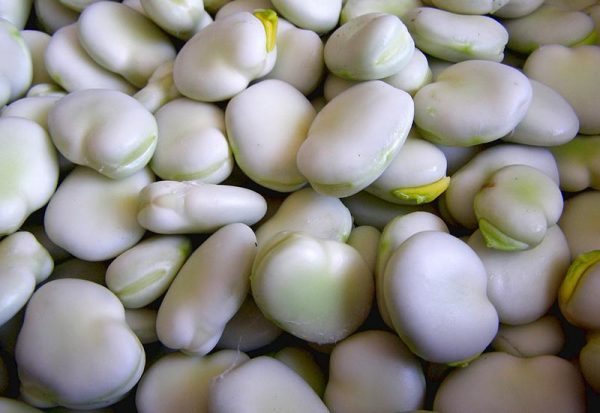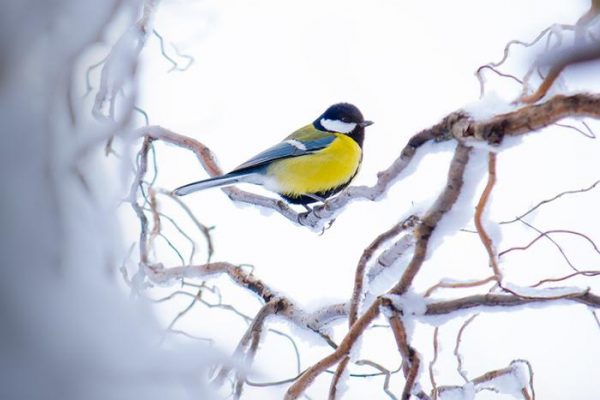
What to sow in November - broad beans
Arguably, sowing seeds at this time of year can get you a head start on next spring. However, the reality is that – unless you have somewhere frost-free to keep your tender, newly-sprouted seedlings – you are often better waiting until the New Year. The only exception to that, in our view, are broad beans, which benefit from the longer growing season by sowing in November (or even late October).
I can almost hear you saying “Broad beans? Yuck!” But trust me. A freshly picked, new and tender broad bean has almost no resemblance to the tough-skinned, chewy thing many of us remember being forced to eat as children. Growing your own is one way to ensure you taste them at their best! And they are easy to grow, too. Here’s how.

Where to sow
Here in sunny Hampshire, broad beans can be planted directly into the soil in the autumn. Choose a sunny, sheltered spot and have a good dig through the soil, removing any weeds. It can help to lay plastic sheeting or similar over the soil for a few weeks before planting, to help retain some warmth in the soil. Like most vegetables, beans would benefit from a high potassium general fertiliser so consider digging some through your soil at this stage. (If you don’t have a sunny spot, skip ahead to the paragraph below about sowing in pots instead).
How to sow
Make a shallow trench in the soil, about 5cm (2 inches) deep and space the seeds about 20cm (9 inches) apart. Some would tell you to plant more closely together than that, in case some seeds don’t germinate or rot in the ground, and then thin them out later, but we leave that to you. Cover the seeds over and water well. If the forecast is particularly cold or frosty, consider covering the row with a cloche or pegged-down fleece to help protect the seeds. Hopefully you will see the first shoots in about 10 days.
As an insurance policy, or if you don’t have a suitably sunny spot, broad beans can also be sown in small seed pots indoors too. This has the benefit that they are probably less likely to rot in the ground. They don’t need any great warmth, so in the house would be too much, but a cool, sunny greenhouse just to protect them from frost should be enough. Keep your seeds/seedlings well-watered. Start to acclimatise them to outside conditions in the New Year, ready to be planted into your vegetable patch in April or May.
We’d also suggest you don’t just sow once. Sowing two or three batches, about 4-6 weeks apart, will help ensure you get longer cropping in the summer. If you don’t have a garden, broad beans can be sown in large containers too!

Maintenance
Once established, broad beans need very little maintenance. Keep the weeds around them to a minimum, to reduce competition for nutrients. Once the first flowers appear, pinch out the very tip of the plant, to encourage it to put energy into beans not height, and keep them well-watered if it’s dry.
If your plants start to get particularly tall, you might want to think about either staking each plant or put supports at each end of a row and then run string between them to support the beans instead. Broad beans come in taller and dwarf varieties so yours might not need any support.
Harvesting
Your beans should be ready to harvest from May onwards. To enjoy the beans at their best, pick them when they are about 7cm (3 inches) long. At this size, you can cook them whole, like mange tout, without shelling them. If you wait longer, the beans will become larger and less sweet. If the ‘seam’ along the pod has turned brown or black, rather than white or green, the beans will have become tough.
As they start to crop, harvest regularly to encourage the remaining flowers to crop too. Use scissors or secateurs to avoid damaging the plant. You can also eat the young tips; cook and eat as you would spinach or pea shoots.
After the harvest
Once your bean plants have finished producing, you can either cut the plants down or dig the whole lot into the soil. If you cut them down, leave the roots in the soil over winter as this will help replenish nitrogen levels in your soil, and then chop and compost the stalks.
Further reading
Advice on sowing seed
General tips on sowing seeds
Monthly seed sowing planners
Jobs in the garden for November
Tips for your garden this November
Our top 5 garden jobs in November
Autumn leaves
Gold leaves (and red ones)
Trees for all gardens



Leave a comment
This site is protected by reCAPTCHA and the Google Privacy Policy and Terms of Service apply.